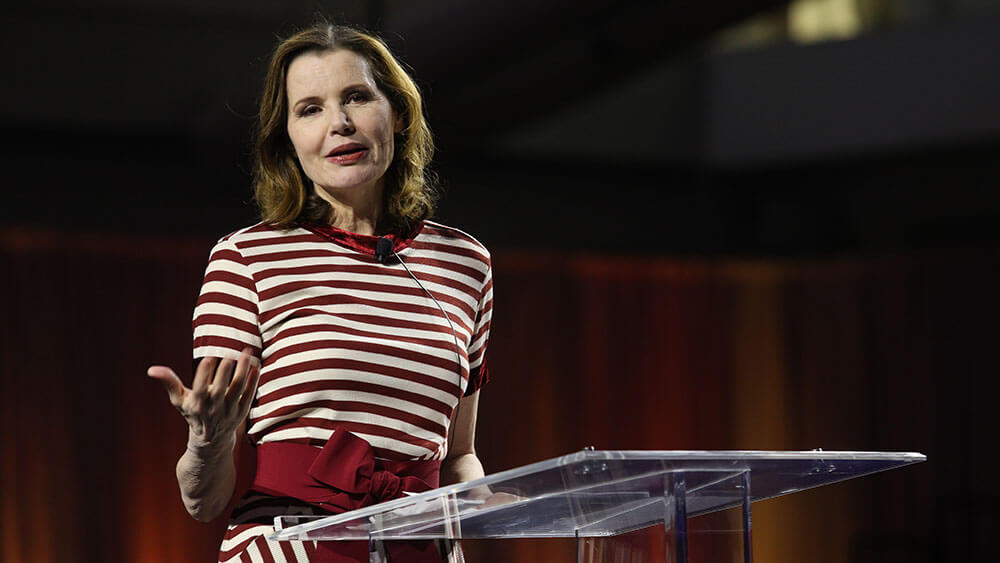
Unconscious gender bias “is everywhere, like a fog,” says actor Geena Davis during Convening Leaders 2019 in Pittsburgh. (Jacob Slaton)
For Geena Davis, the issue of gender bias hit home when the Academy Award-winning actor sat down with her then-two-year-old daughter to watch her first preschool television show.
Davis, who appeared in such stereotype-defying movies as Thelma & Louise and A League of Their Own, immediately noticed that there were far more male characters than female characters on the screen, along with “a great deal of gender stereotyping,” she told the audience at Convening Leaders 2019.
Surely, in the 21st century, Davis said, “kids should be seeing that boys and girls share the sandbox equally.” Instead, the message was that girls and women have far less value than boys and men.
Yet when the actor shared what she saw with producers and others in the entertainment industry, she was met with protests “that gender inequality had been fixed,” she said. “I decided I needed the numbers.”
In 2004, Davis founded the Geena Davis Institute on Gender in Media, to conduct research and compile data on women and girls in the media. Among the findings: In the top 100 family films, male characters outnumber female characters two-to-one in leads, screen time, and speaking time.
Institute research also demonstrated that an increase in the number of female lead characters can result in change in the real world. One example: “Boys and men have always dominated the sport of archery,” said Davis. In 2012, the year that The Hunger Games and Brave, both with female archers as lead characters, were released, the number of girls in archery skyrocketed.
“No matter how hard we work, we can’t just snap our fingers and suddenly Congress is half women,” Davis said. “How are we going to conquer this unconscious gender bias that’s in all of us, men and women, that’s holding us back?”
Davis’s theory of change: Start with the images. The “one category of gross gender inequality that could be fixed absolutely overnight is on screen,” Davis said. “In the time it takes to create a new TV show or write a movie, we can change what the future looks like.”
There are woefully few female CEOs in real life, she said, but half of the CEOs in movies could be female tomorrow. “How to increase the number of women and girls interested in STEM careers? There can be droves of women in STEM on screen,” Davis said. “And then life imitates art. If they see it, they can be it.”
No one escapes gender bias, she added. “It is only by recognizing the stubborn nature of unconscious biases and making very clear conscious policies to overcome them, can we receive the benefits of actual fair representation.”
The strategy also applies to creating business events that equally represent the genders, Davis told Convene. “Don’t just take the easy way” inviting the same people who’ve always spoken to speak, she said. “You have to be deliberate and set goals.”
Barbara Palmer is Convene’s deputy editor.
Down to Their Shoes
“What if,” Geena Davis asked the audience at the closing session, “the problem of unconscious gender bias goes much deeper than we ever could possibly have imagined?”
Davis shared her favorite example of how thoroughly gender bias is ingrained: an attempt by orchestras, once heavily male-dominated, to screen out bias by having male and female musicians audition behind a curtain.
It was only when males and females took off their shoes that gender parity was reached — just the difference in the sound that men and women make when they walk across the stage was enough to trigger bias, Davis said.
